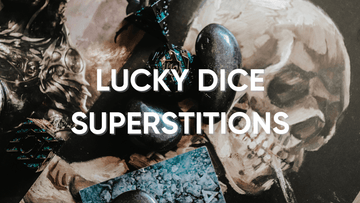Tabletop RPGs thrive on storytelling, drama, and the interplay between characters. A little in-character conflict—whether a heated debate, a betrayal, or even a duel—can add excitement and depth to the game. But when those tensions aren’t handled with care, they can spill over into real-life hurt feelings, potentially harming friendships. So how can you keep in-character drama fun and engaging without it turning into an out-of-character problem? Here are some tips to navigate this delicate balance.
1. Discuss Before You Instigate Conflict
Before your character picks a fight, betrays an ally, or challenges another character’s actions, check in with the other player. Open communication ensures that they’re on board with the conflict and gives them a chance to voice any concerns.
- Ask for Consent: A simple, “Hey, I was thinking our characters might clash over this decision. Are you okay with that?” can make a big difference.
- Set Boundaries: Some players enjoy high-stakes conflict, while others prefer to keep things lighter. Knowing where everyone stands helps avoid stepping on toes.
2. Frame the Conflict as Collaborative Storytelling
In-character conflicts shouldn’t be about “winning” but about creating a compelling narrative together. Approach disagreements with the mindset of co-authors building an exciting story, rather than opponents trying to one-up each other.
- Emphasise Shared Goals: Remind everyone that you’re working together to make the game fun and memorable for the group.
- Plan Key Moments: Collaboratively decide on pivotal moments of the conflict—like a dramatic argument or a reconciliation scene—so both players feel involved in shaping the story.

3. Keep It In-Character
It’s easy for in-character conflict to bleed into out-of-character feelings, especially if the lines between the two blur. Make a clear distinction between what your character feels and what you feel as a player.
- Signal the Role-Play: Use phrases like, “My character says…” or “I think from their perspective…” to remind everyone that the tension is fictional.
- Avoid Personal Attacks: Ensure your character’s actions or words don’t come across as a critique of the other player. For example, saying, “Your plan is idiotic” might feel personal, but saying, “My character is frustrated because they feel like this plan might fail” keeps it in context.
4. Check In Regularly
During and after moments of conflict, take time to check in with the other player to ensure everyone is still comfortable and having fun.
- Mid-Game Check-Ins: If a scene gets particularly heated, pause briefly to ask, “Is this still okay for you?” This reassures the other player that you care about their experience.
- Post-Session Debriefs: After the game, touch base to see how they felt about the conflict. Did it work for the story? Would they want to adjust anything next time?
5. Set Ground Rules as a Group
During Session 0 or any group discussion, talk about how you’ll handle in-character conflict. Establishing clear guidelines ensures that everyone is on the same page before tensions arise.
- Limits on PvP: Decide as a group whether player-vs-player combat or betrayals are allowed, and if so, under what circumstances.
- Conflict Resolution Plans: Agree on how to resolve in-character disputes—whether it’s through dice rolls, role-played arguments, or a GM-moderated discussion.

6. Know When to De-Escalate
Sometimes, even the best intentions can lead to conflict that feels too intense. If emotions are running high or a scene is dragging down the fun, it’s okay to step back and shift the tone.
- Use a Safe Word or System: Tools like the “X-Card” or other safety mechanics allow players to signal when they’re uncomfortable, no questions asked.
- Move the Plot Forward: If conflict is stalling progress, suggest a way to resolve it quickly so the story can continue. For example, “What if our characters agree to disagree for now and revisit this later?”
7. Balance Conflict with Cooperation
While disagreements can be exciting, too much conflict can make the game feel stressful or adversarial. Balance dramatic moments with scenes where the characters work together, laugh, or bond.
- Find Common Ground: Highlight shared goals or mutual respect between characters, even if they don’t see eye to eye.
- Plan Reconciliation Moments: A heartfelt apology, a shared victory, or even a quiet moment of understanding can make the resolution just as memorable as the conflict.
8. Communicate with the GM
If you’re unsure how a conflict might play out, talk to your Game Master. They can help mediate, provide neutral guidance, or weave the tension into the larger story in a way that benefits everyone.
- Ask for Support: Let the GM know if you’d like them to step in and help manage the conflict.
- Collaborate on Stakes: Work with the GM to determine how the conflict affects the broader narrative, keeping things meaningful but not disruptive.
Final Thoughts
In-character conflict can add depth and drama to your RPG campaign, but only if it’s handled with care. Open communication, collaborative storytelling, and regular check-ins can ensure that disagreements remain fun and enriching, rather than damaging to your group’s dynamic. Remember, the goal is to create a story together—one where everyone feels heard, respected, and excited to keep playing.
So go ahead and let your characters clash, scheme, and argue—but always make sure your friendships stay as strong as your dice rolls.








